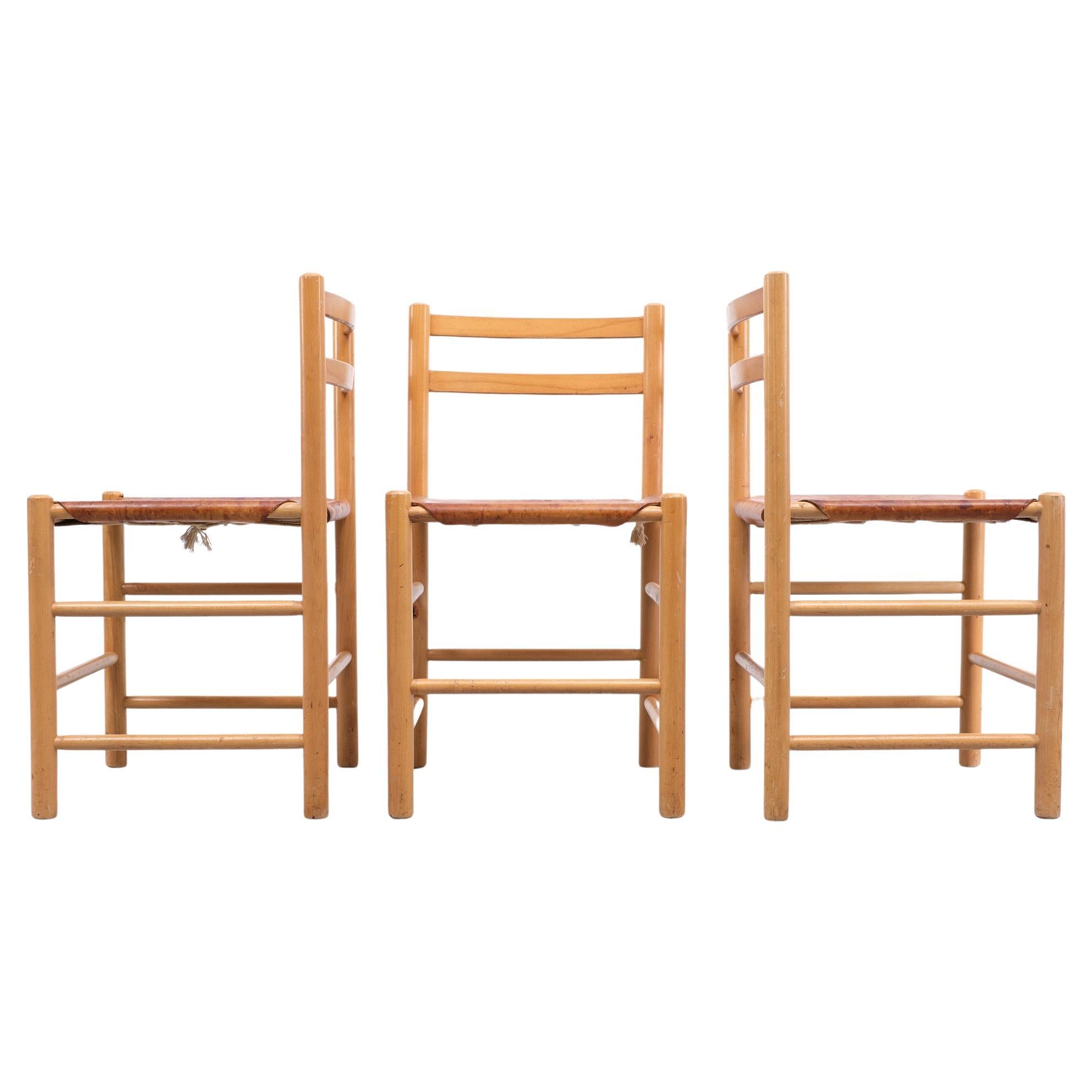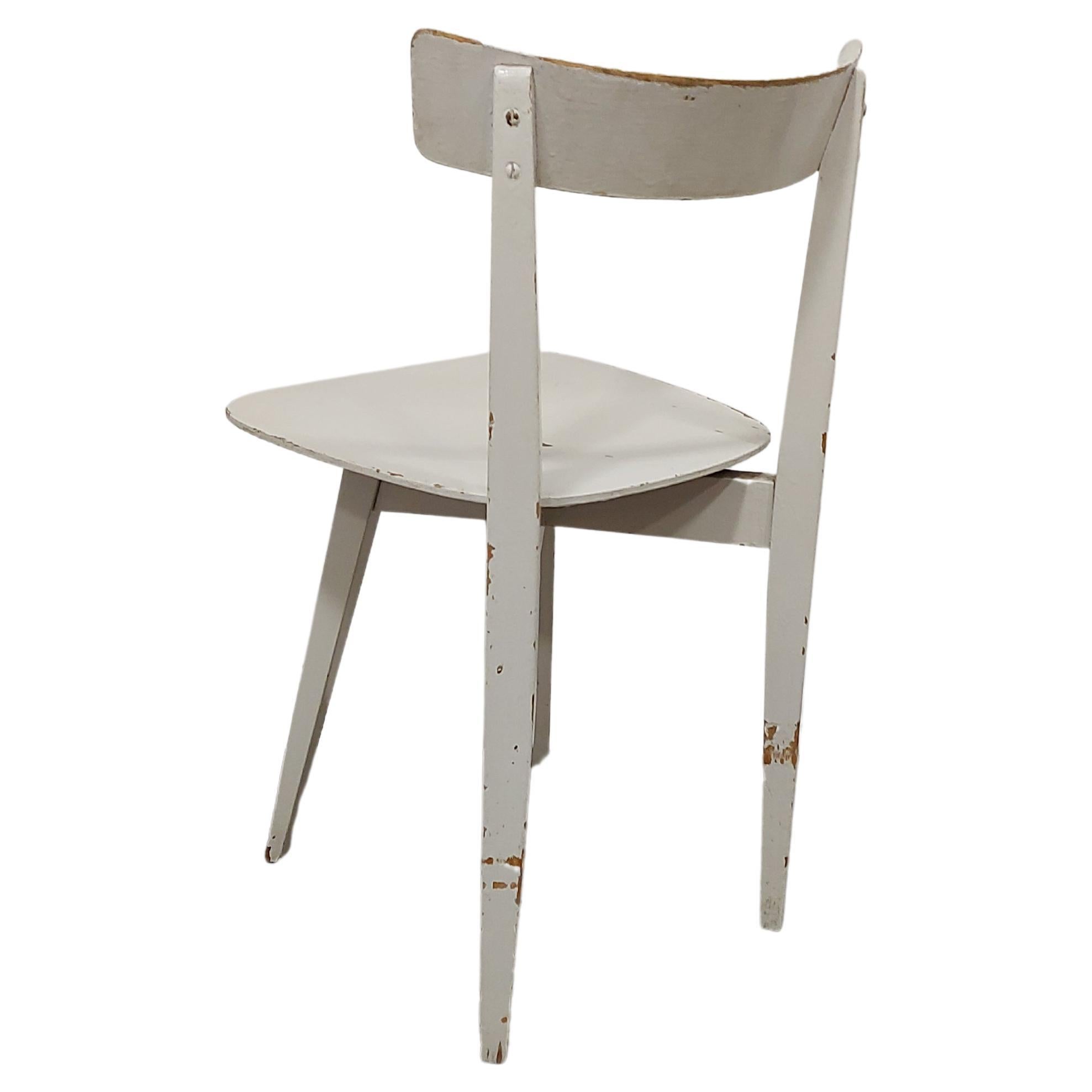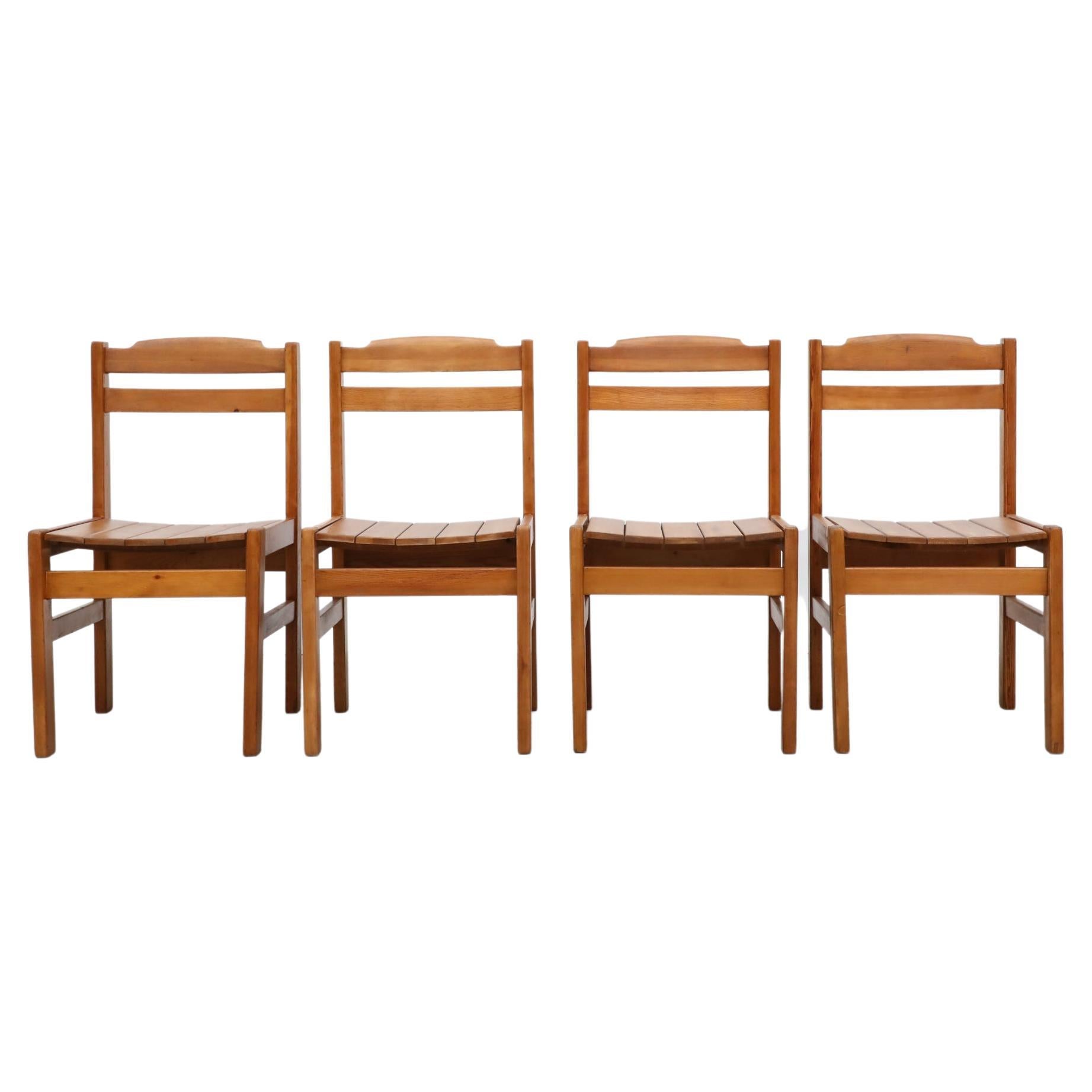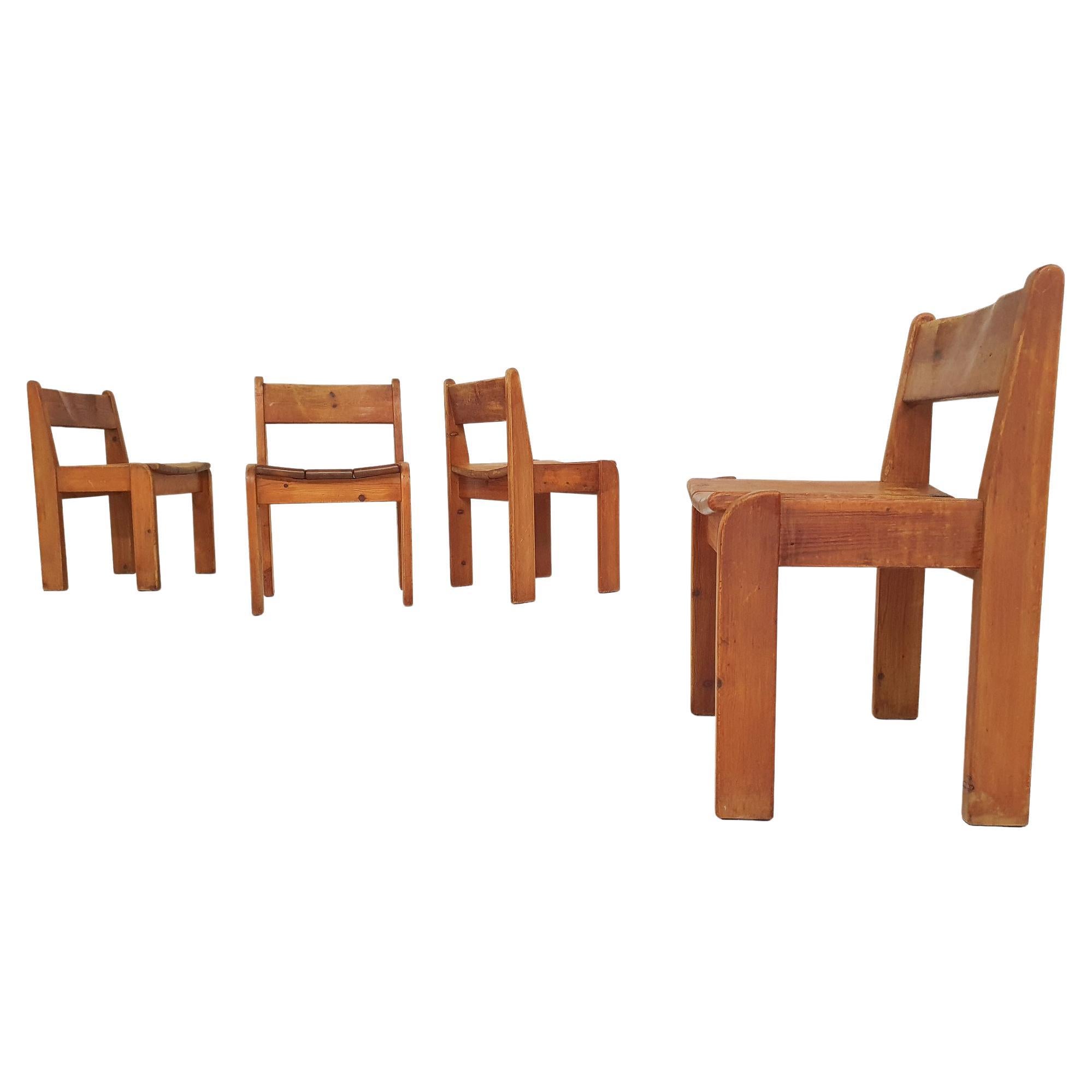Items Similar to Prototype aluminum + leather Ate Van Appledoorn small chair, unique, 1960s
Want more images or videos?
Request additional images or videos from the seller
1 of 12
Prototype aluminum + leather Ate Van Appledoorn small chair, unique, 1960s
About the Item
Very unique handmade aluminum tubular and leather chair. the dimensions are smaller than a regular chair. The height and seat height are standard. The overall is patinated and shows various shades of brown/brownish colors on the leather. Elegant and brutalist describe that chair properly. Very strong eye catcher chair. Perfect in a room or as a powder room chair. fit any narrow hallway. Design by Ate Van Appeldoorn in the Netherlands.
------------------------------------------------------------------------------------------------------------
Brutalist architecture is an architectural style that emerged during the 1950s in the United Kingdom, among the reconstruction projects of the post-war era. Brutalist buildings are characterised by minimalist constructions that showcase the bare building materials and structural elements over decorative design. The style commonly makes use of exposed, unpainted concrete or brick, angular geometric shapes and a predominantly monochrome colour palette; other materials, such as steel, timber, and glass, are also featured.
Descending from the modernist movement, brutalism is said to be a reaction against the nostalgia of architecture in the 1940s. Derived from the Swedish phrase nybrutalism, the term "new brutalism" was first used by British architects Alison and Peter Smithson for their pioneering approach to design. The style was further popularised in a 1955 essay by architectural critic Reyner Banham, who also associated the movement with the French phrases béton brut ("raw concrete") and art brut ("raw art"). The style, as developed by architects such as the Smithsons, Hungarian-born Erno Goldfinger, and the British firm Chamberlin, Powell & Bon, was partly foreshadowed by the modernist work of other architects such as French-Swiss Le Corbusier, Estonian-American Louis Kahn, German-American Mies van der Rohe, and Finnish Alvar Aalto.
In the United Kingdom, brutalism was featured in the design of utilitarian, low-cost social housing influenced by socialist principles and soon spread to other regions around the world. Brutalist designs became most commonly used in the design of institutional buildings, such as universities, libraries, courts, and city halls. The popularity of the movement began to decline in the late 1970s, with some associating the style with urban decay and totalitarianism.
Brutalism has been polarising historically; specific buildings, as well as the movement as a whole, have drawn a range of criticism (often being described as "cold" or "soulless") but have also elicited support from architects and local communities (with many brutalist buildings having become cultural icons, sometimes obtaining listed status). In recent decades, the movement has become a subject of renewed interest. In 2006, several Bostonian architects called for a rebranding of the style to "heroic architecture" to distance it from the negative connotations of the term "brutalism".
- Creator:Ate Van Apeldoorn (Designer)
- Dimensions:Height: 33.71 in (85.6 cm)Width: 14.34 in (36.4 cm)Depth: 14.34 in (36.4 cm)Seat Height: 17.72 in (45 cm)
- Style:Brutalist (In the Style Of)
- Materials and Techniques:
- Place of Origin:
- Period:
- Date of Manufacture:1960's
- Condition:Wear consistent with age and use. Minor fading. patina.
- Seller Location:Forest, BE
- Reference Number:1stDibs: LU8186236493362
About the Seller
5.0
Gold Seller
These expertly vetted sellers are highly rated and consistently exceed customer expectations.
Established in 2007
1stDibs seller since 2023
18 sales on 1stDibs
Typical response time: 1 hour
- ShippingRetrieving quote...Ships From: Forest, Belgium
- Return PolicyA return for this item may be initiated within 14 days of delivery.
More From This SellerView All
- French Brutalist massive pine Tree chair, unique, 1950s Handmade, folk artBy José Zanine Caldas, Pierre ChapoLocated in Forest, BEVery unique handmade with massive pine. Unusual chair. The overall is patinated and shows various shades of brown/brownish colors. Elegant and brutalist describe that chair properly....Category
Mid-20th Century French Brutalist Chairs
MaterialsHardwood
- Grete Jalk, Midcentury 4 Rosewood and Leather Chairs P Jeppesens DenmarkBy Poul Jeppesens Møbelfabrik, Grete JalkLocated in Forest, BEElegant massive rosewood and black leather chairs by female designer Grete Jalk. Produced in the 60's by cabinetmaker Poul Jeppessens. We have 4 chairs available and a table. 8 more chairs without leather on the backrest so 12 chairs in total. Please ask for more pictures. _____________________________________________________________ Grete Juel Jalk est née à Copenhague. Après avoir été diplômée de l'école secondaire, section langues et philosophie, elle a étudié à l'École de design pour femmes (de 1940 à 1943) avec l’ ébéniste Karen Margrethe Conradsen. Elle a terminé ses études à la Danish Design School en 1946, et a également suivi un enseignement avec Kaare Klint à l'Académie royale des beaux-arts du Danemark. Elle a pris part aux compétitions annuelles du Musée du Design et du département mobilier de la Design School, où elle a également enseigné de 1950 à 1960. En 1953, Jalk ouvre son propre studio de design. Inspirée par le mobilier stratifié, courbé, contreplaqué de Alvar Aalto et les créations en contreplaqué moulé de Charles Eames, elle commence à développer ses propres modèles tout en courbes. L’intérêt pour ces modèles non conventionnels a progressé lentement. En 1963, le journal anglais The Daily Mirror...Category
Mid-20th Century Danish Scandinavian Modern Chairs
MaterialsLeather, Rosewood
- Grete Jalk, Midcentury 8 Rosewood and Leather Chairs P Jeppesens DenmarkBy Poul Jeppesens Møbelfabrik, Grete JalkLocated in Forest, BEElegant massive rosewood and black leather chairs by female designer Grete Jalk. Produced in the 6à's by cabinetmaker Poul Jeppessens. We have 8 chairs available and a table. 4 more chairs with leather on the backrest so 12 chairs in total. Please ask for more pictures. _____________________________________________________________ Grete Juel Jalk est née à Copenhague. Après avoir été diplômée de l'école secondaire, section langues et philosophie, elle a étudié à l'École de design pour femmes (de 1940 à 1943) avec l’ ébéniste Karen Margrethe Conradsen. Elle a terminé ses études à la Danish Design School en 1946, et a également suivi un enseignement avec Kaare Klint à l'Académie royale des beaux-arts du Danemark. Elle a pris part aux compétitions annuelles du Musée du Design et du département mobilier de la Design School, où elle a également enseigné de 1950 à 1960. En 1953, Jalk ouvre son propre studio de design. Inspirée par le mobilier stratifié, courbé, contreplaqué de Alvar Aalto et les créations en contreplaqué moulé de Charles Eames, elle commence à développer ses propres modèles tout en courbes. L’intérêt pour ces modèles non conventionnels a progressé lentement. En 1963, le journal anglais The Daily Mirror...Category
Mid-20th Century Danish Scandinavian Modern Chairs
MaterialsLeather, Rosewood
- Majestic Schist Fossil Stone Coffee Table, antique Japanese wooden base. Unique.Located in Forest, BEMajestic stone coffee table. The top is made of a golden and grayish slate of schist with fossils inlays dating from the 1950's from a Belgian coffee table. The base is made of an an...Category
Antique Early 19th Century Japanese Brutalist Coffee and Cocktail Tables
MaterialsStone, Schist
- Swedish Brutalist Tree Trunk Coffee Table, nice patina 1940s Handmade UniqueBy Axel VervoordtLocated in Forest, BEVery unique handmade with a tree trunk as a feet. The top is patinated and shows various shades of green colors. Elegant and brutalist describe that table properly. The height is 66 ...Category
Mid-20th Century Swedish Brutalist Coffee and Cocktail Tables
MaterialsHardwood
- Swedish Brutalist Tree Trunk Coffee Table, green marble 1940s Handmade UniqueBy Axel VervoordtLocated in Forest, BEVery unique handmade with a tree trunk and a massive slay of green marble. The top is patinated and shows various shades of green colors. Elegant and brutalist describe that table pr...Category
Mid-20th Century Swedish Brutalist Coffee and Cocktail Tables
MaterialsStone, Marble
You May Also Like
- Ate van Apeldoorn chairs 1960s HollandBy Houtwerk HattemLocated in Den Haag, NL3 Beech wood chairs Designed by Ate van Apeldoorn for Houtwerk Hattum Cognac color Leather seats .knotted at the bottom . The leather seats are in a distressed condition . see Pho...Category
Vintage 1960s Dutch Mid-Century Modern Dining Room Chairs
MaterialsBeech
- Chair, 1960s UniqueLocated in Ljubljana, SIVintage Chair Period: 1960s Material: wood, plywood Colour: white Condition: good original vintage condition, signs of use dimensions: H = 73 cm, W = 38cm, D = 44cm, s...Category
Vintage 1960s Slovenian Mid-Century Modern Chairs
MaterialsHardwood, Bentwood
- Set of 4 Ate van Apeldoorn Style Ladder Back, Slatted 1970's Pine Dining ChairsLocated in Los Angeles, CAThese four pine dining chairs have handsome grain patterns, ladder backs and slatted seats that slightly curve up. The chairs are in original condition with visible wear, including s...Category
Vintage 1970s Dutch Mid-Century Modern Chairs
MaterialsPine
- Set of 4 Ate van Apeldoorn Style Slatted Pine Dining Chairs with Lovely Top RailLocated in Los Angeles, CASet of 4 pine side chairs designed in the style Ate van Apeldoorn featuring a lovely little detail on the top backrest five pine slats for the seating. The set is in original conditi...Category
Vintage 1970s Dutch Mid-Century Modern Dining Room Chairs
MaterialsPine
- Set of four dining chairs by Ate van Apeldoorn for Houtwerk Hattem, NL 1970'sBy Houtwerk HattemLocated in Amsterdam, NLSolid pinewood dining chairs by Ate van Apeldoorn. We also have a matching pinewood dining table available. Chairs are in used condition.Category
Vintage 1970s Dutch Scandinavian Modern Chairs
MaterialsPine
- Richard Schultz Prototype Aluminum Stacking Chair #1By Richard SchultzLocated in New York, NYPrototype stacking chair hand-built of an aluminum sheet and tubular aluminum by furniture designer and artist Richard Schultz as a full-size 3-D model exploring the ergonomic and sc...Category
1990s American Modern Chairs
MaterialsAluminum
Recently Viewed
View AllMore Ways To Browse
Le Corbusier Chair 1960
Leather Ater
Carved Low Chair
Ate Apeldoorn
Goldfinger Chairs
Low Seating French Chairs
Le Corbusier Brutalist
Modernist Architect Chairs
French Structural Chair
Midcentury Library Chair
Brutalism Furniture
Jeanneret Student Chair
Lee Stanton
Mccobb Fiberglass
Paul Mccobb Fiberglass Chair
Paul Mccobb Fiberglass
5 Legged Chair
Black Mexican Chairs





